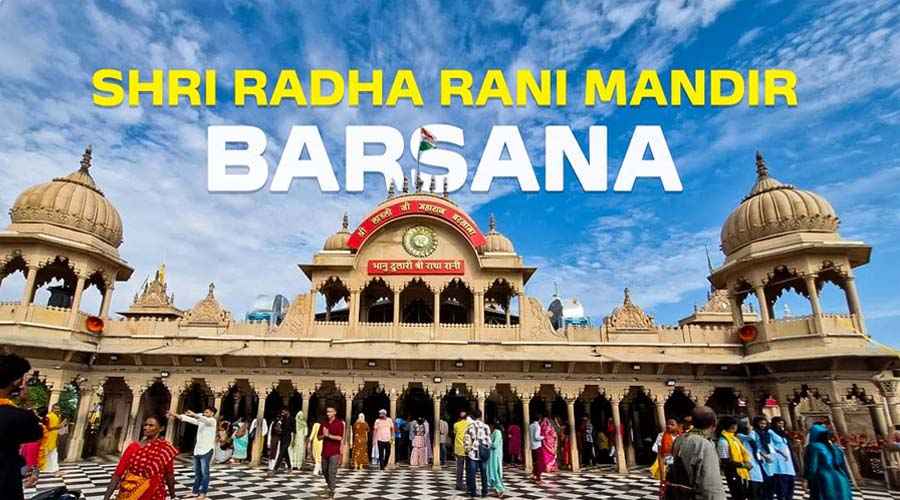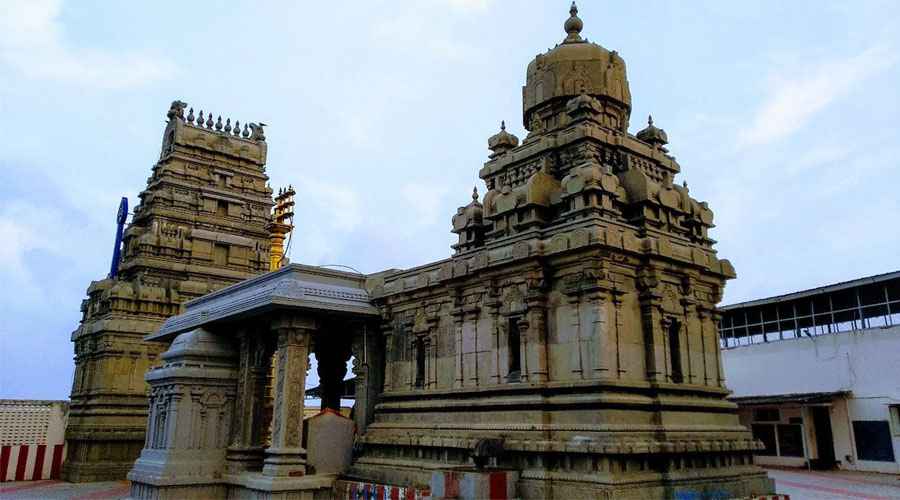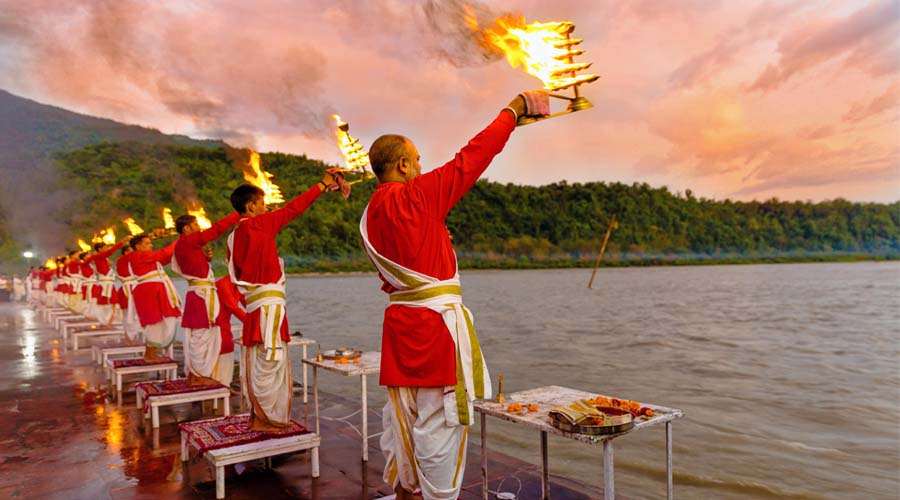Shri Radha Rani Temple Barsana is a historic and culturally significant Hindu temple located in the town of Barsana, Mathura district, Uttar Pradesh, India. This temple is dedicated to Goddess Radha, the divine consort of Lord Krishna, and holds immense religious importance, especially in the Braj region where the legends of Radha and Krishna’s divine pastimes are deeply cherished.
History of Shri Radha Rani Temple Barsana
The temple’s origins date back approximately 5,000 years, traditionally believed to have been established by King Vajranabh, who was the great-grandson of Lord Krishna. The temple is situated atop Bhanugarh Hill, which stands about 250 meters high, offering a panoramic view of Barsana town. Historically, this area is significant as it was the abode of Radha’s family; her father, King Vrishbhanu, resided here. The temple is often called “Shriji Temple” or “Ladli Mahal,” emphasizing Radha as the beloved daughter of Barsana.
Over centuries, the original temple structure fell into ruin, and the sacred idols were lost until their rediscovery by Narayan Bhatt, a disciple of Chaitanya Mahaprabhu. In 1675 AD, Raja Bir Singh Deo constructed a new temple on this site. The present structure owes much to the efforts of Narayan Bhatt and Raja Todarmal, a governor under Emperor Akbar, who contributed to its architectural development. The temple combines tall walls, arches, pillars, red sandstone carvings, domes, and exquisite paintings depicting Radha-Krishna’s pastimes, making it architecturally impressive as well as spiritually uplifting.
Barsana is also surrounded by four historical hills – Vrishbhanu Garh, Dan Garh, Vilas Garh, and Maan Garh. According to legend, these four peaks symbolize the four heads of Lord Brahma, who took this form to witness the divine activities of Radha and Krishna. These geographic and mythological connections add to the temple’s sanctity and its attraction to devotees worldwide.
Temple Timings
The Shri Radha Rani Temple remains open to devotees twice daily with slight variations during summer and winter:
- Summer: Morning from 5:00 AM to 2:00 PM and evening from 5:00 PM to 9:00 PM
- Winter: Morning from 5:30 AM to 2:00 PM and evening from 5:00 PM to 8:30 PM
Visitors can reach the temple by ascending 225 steps or by vehicle up to the Kushalbihari Temple followed by a 10-minute walk. Entry to the temple is free of cost.
Major Festivals Celebrated at Shri Radha Rani Temple
The temple is famed for hosting vibrant celebrations that attract thousands of pilgrims, particularly during the following festivals:
- Lathmar Holi: This unique and playful festival reenacts the legendary Holi celebrations between Krishna and Radha. The story behind Lathmar Holi is that when Krishna and his friends came to Barsana to play Holi, Radha and her friends greeted them playfully with sticks and drove them away. This centuries-old tradition is celebrated today with women of Barsana playfully chasing men from Nandgaon (Krishna’s hometown) with sticks while the men try to shield themselves. The festival spans more than a week, starting before the traditional Holi day and continuing until Rang Panchami, drawing huge crowds and showcasing the spirit of divine love and playful camaraderie.
- Radhashtami: This festival marks the birthday of Radha Rani and is celebrated 15 days after Krishna Janmashtami (Krishna’s birthday). On this day, the temple is decorated elaborately with flowers and lights, and the idols of Radha and Krishna are dressed in new clothes and adorned with jewellery. Devotees can see Radha’s feet on this day, which remain covered on other days. Special worship rituals and offerings, including “Chappan Bhog” (56 varieties of food), are conducted, and prasada is distributed among devotees.
- Krishna Janmashtami: The temple also celebrates Krishna’s birthday with great devotion, similar to Radhashtami, with decorations and special pujas.
The temple’s festivals not only highlight the spiritual connection between Radha and Krishna but also preserve the traditional cultural practices of the Braj region, making it an important pilgrimage destination for devotees and tourists alike.
Significance and Cultural Impact
Shri Radha Rani Temple in Barsana embodies the spiritual essence of Krishna and Radha’s eternal love story. It represents Radha’s home and her divine role alongside Krishna, making Barsana a key location in Braj Bhoomi, the land associated with their pastimes. The temple stands as a symbol of devotion, art, culture, and heritage.
The temple’s location on Bhanugarh Hill has spiritual significance, linking mythology, geography, and devotion. It continues to inspire pilgrims from all over the world, enhancing Barsana’s reputation as a major religious hub. The celebrations, especially Lathmar Holi, have gained international recognition for their unique blend of mythology, ritual, and joyous community spirit.
Visiting Shri Radha Rani Temple Barsana
For devotees and visitors planning a trip, Barsana is accessible from Mathura, which is around 44 kilometers away. The temple’s scenic hilltop location requires some physical effort to reach, whether by climbing the steps or a combination of vehicular and walking routes. The best times to visit are during the winter months for comfortable weather or during the festive seasons of Radhashtami (September) and Holi (March).
In Conclusion, Shri Radha Rani Temple Barsana is not just an architectural marvel but a living center of faith. Its rich history spanning over millennia, vibrant festivals reflecting ancient traditions, and deep spiritual resonance make it a must-visit destination for those interested in the cultural and religious heritage of India.
This temple, as the cherished abode of Radha Rani, continues to draw devotees who seek the blessings of the beloved goddess and wish to immerse themselves in the divine aura of Braj Bhoomi.



